| Listing 1 - 10 of 15 | << page >> |
Sort by
|
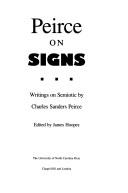
ISBN: 0807843423 0807819921 9780807843420 9780807819920 Year: 1991 Publisher: Chapel Hill, N.C. University of North Carolina Press
Abstract | Keywords | Export | Availability | Bookmark
 Loading...
Loading...Choose an application
- Reference Manager
- EndNote
- RefWorks (Direct export to RefWorks)
Semiotics --- Peirce, --- Semantics (Philosophy) --- Sémiotique --- Sémantique (Philosophie) --- Contributions in semiotics --- Peirce, Charles Sanders, --- Peirce, Charles S. --- Contributions in semiotics. --- Peirce, Charles Sanders, - 1839-1914
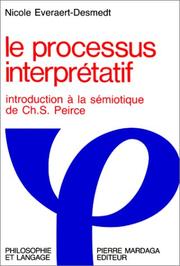
ISBN: 2870093918 9782870093917 Year: 1990 Volume: vol *73 Publisher: Liège Mardaga
Abstract | Keywords | Export | Availability | Bookmark
 Loading...
Loading...Choose an application
- Reference Manager
- EndNote
- RefWorks (Direct export to RefWorks)
Semiotics --- Peirce, Charles Sanders --- semiotiek --- Linguistique --- Peirce, C. --- Semeiotics --- Semiology (Linguistics) --- Semiotiek --- Sémiologie --- Sémiotique --- Séméiologie --- Séméiotique --- Taalkunde --- Peirce, Charles S. --- Contributions in semiotics --- Et la sémiotique --- Philosophie --- Sémiotique --- Et la sémiotique --- Contributions in semiotics. --- Linguistics
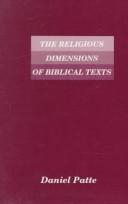
ISBN: 1555403859 9781555403850 Year: 1990 Volume: 19 Publisher: Atlanta, GA Scholars Press
Abstract | Keywords | Export | Availability | Bookmark
 Loading...
Loading...Choose an application
- Reference Manager
- EndNote
- RefWorks (Direct export to RefWorks)
Actes de foi --- Analyse du discours --- Croyance religieuse --- Croyants --- Discourse analysis --- Discourse grammar --- Faith --- Foi --- Foi chrétienne --- Foi religieuse --- Foi théologale --- Geloof --- Semeiotics --- Semiology (Linguistics) --- Semiotics --- Semiotiek --- Sémiologie --- Sémiotique --- Séméiologie --- Séméiotique --- Tekstgrammatica --- Tekstlinguïstiek --- Text analysis --- Text grammar --- Semiotics. --- Discourse analysis. --- Faith. --- Greimas, Algirdas Julien --- Contributions in semiotics. --- Bible --- Hermeneutics. --- Contributions in semiotics --- Hermeneutics --- Greimas, Algirdas Julien - Contributions in semiotics. --- Bible - Hermeneutics. --- Greimas, Algirdas Julien - Contributions in semiotics
Book
ISBN: 9027232962 9789027232960 9786613358745 1283358743 9027278237 Year: 1990 Volume: 24 Publisher: Amsterdam Benjamins
Abstract | Keywords | Export | Availability | Bookmark
 Loading...
Loading...Choose an application
- Reference Manager
- EndNote
- RefWorks (Direct export to RefWorks)
La classification des signes de C.S. Peirce en icones, indices et symboles est universellement reconnue. Est-ce le resultat d'une heureuse rencontre ou la preuve de la pertinence du système de pensée qui l'a produite? Est-ce l'absence d'une présentation scientifique de la sémiotique de Peirce qui autorise cette interrogation? Cet essai montre précisément, au moyen d'une formalisation qui épouse au plus près le contenu des manuscrits de Peirce, la possibilité d'approcher scientifiquement les phénomènes sémiotiques. Partant d'une formalisation de la perception en termes de structures relationnel
Semiotics --- Peirce, Charles Sanders, --- Contributions in semiotics --- Semiotics. --- Peirce, Charles Sanders --- Semeiotics --- Semiology (Linguistics) --- Semantics --- Signs and symbols --- Structuralism (Literary analysis) --- Peirce, Charles S. --- -Contributions in semiotics --- Sémiotique --- Peirce, C. S. --- Pirs, Charlz S., --- Peirce, Charles Santiago Sanders, --- Pʻo-erh-ssu, --- Pʻo-erh-ssu, Chʻa-li-ssu, --- Purs, Charls, --- Пърс, Чарлс, --- Chaersi Sangdesi Piersi, --- 查尔斯·桑德斯·皮尔斯, --- Peirce, Charles Sanders, - 1839-1914 - Contributions in semiotics --- Peirce, Charles Sanders, - 1839-1914
Book
ISBN: 8828000198 9788828000198 Year: 1983 Volume: 37 Publisher: Milano : Marzorati,
Abstract | Keywords | Export | Availability | Bookmark
 Loading...
Loading...Choose an application
- Reference Manager
- EndNote
- RefWorks (Direct export to RefWorks)
Language and languages --- Semiotics --- Langage et langues --- Sémiotique --- Philosophy --- Philosophie --- Rosmini, Antonio, --- Contributions in semiotics --- Sémiotique --- Language and languages - Philosophy --- Rosmini, Antonio, - 1797-1855
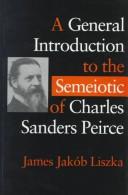
ISBN: 0253330475 Year: 1996 Publisher: Bloomington Indiana University Press
Abstract | Keywords | Export | Availability | Bookmark
 Loading...
Loading...Choose an application
- Reference Manager
- EndNote
- RefWorks (Direct export to RefWorks)
The nineteenth-century American philosopher and scientist Charles Sanders Peirce is considered to be one of the founders of semiotic, or the theory of signs. Although Peirce was a prolific writer, he never published his work on signs in an organized fashion, and as a result the scope of his thought is difficult to grasp. In this book, James Jakob Liszka presents a systematic and comprehensive account of Peirce's theory. Although there are excellent critical and expository studies of Peirce's semiotic, this book is the first to integrate all the various branches of semiotic into a coherent picture of what Peirce meant by the discipline. A general introduction for those unfamiliar with Peirce's theory, it is also an attempt to resolve some of the scholarly issues that surround the great American philosopher, and to help achieve some consensus on the more controversial matters of interpretation. Liszka begins with a general overview of the discipline of semeiotic (which is Peirce's preferred spelling). Semeiotic plays a critical role in the system of sciences as Peirce understood it. Since all investigation involves signs, semeiotic is pivotal since it not only provides a general understanding of signs, but also investigates their proper use in the process of inquiry, for both the natural sciences and cultural studies. The character of semeiotic in this regard turns out to be different from the semiology of Saussure, which was meant simply to be a branch of social psychology. Moreover, as a formal discipline, Peirce's semeiotic is broader than the contemporary sense of logic but incorporates most of its traditional concerns. Next, in a chapter on grammar, Liszka explores Peirce's notions of the essential characteristics of signs, their principal components, sign typology, and classification. This is followed by a discussion of critical logic, the proper use of signs in the investigation of the nature of things. Finally, Liszka explains universal rhetoric - the use of signs within discourse communities, the nature of communication, and the character of communities best suited to promote fruitful inquiry.
Semiotics --- Peirce, Charles Sanders --- Semiotics. --- Semeiotics --- Semiology (Linguistics) --- Semiotiek --- Sémiologie --- Sémiotique --- Séméiologie --- Séméiotique --- 82:003 --- 82:003 Semiotiek in de literatuur --- Semiotiek in de literatuur --- Semantics --- Signs and symbols --- Structuralism (Literary analysis) --- Peirce, Charles S. --- Peirce, Charles Sanders, --- Peirce, C. S. --- Pirs, Charlz S., --- Peirce, Charles Santiago Sanders, --- Pʻo-erh-ssu, --- Pʻo-erh-ssu, Chʻa-li-ssu, --- Purs, Charls, --- Пърс, Чарлс, --- Contributions in semiotics --- Congresses --- Peirce, Charles S. - (Charles Sanders), - 1839-1914 - Contributions in semiotics. --- Chaersi Sangdesi Piersi, --- 查尔斯·桑德斯·皮尔斯,
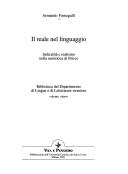
ISBN: 8834304535 9788834304532 Year: 1995 Volume: 8 54 Publisher: Milano : Vita e Pensiero,
Abstract | Keywords | Export | Availability | Bookmark
 Loading...
Loading...Choose an application
- Reference Manager
- EndNote
- RefWorks (Direct export to RefWorks)
Semantics (Philosophy) --- Sémantique (Philosophie) --- Peirce, Charles S. --- Semiotics. --- Semiotics --- Semeiotics --- Semiology (Linguistics) --- Semantics --- Signs and symbols --- Structuralism (Literary analysis) --- -Contributions in semiotics --- Sémantique (Philosophie) --- Peirce, Charles Sanders, --- Peirce, C. S. --- Pirs, Charlz S., --- Peirce, Charles Santiago Sanders, --- Pʻo-erh-ssu, --- Pʻo-erh-ssu, Chʻa-li-ssu, --- Purs, Charls, --- Пърс, Чарлс, --- Peirce, Benjamin --- Contributions in semiotics --- Chaersi Sangdesi Piersi, --- 查尔斯·桑德斯·皮尔斯, --- Peirce (charles sanders), philosophe americain, 1839-1914 --- Critique et interpretation
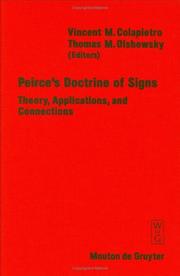
ISBN: 311014252X 3110873451 9783110142525 Year: 1996 Volume: 123 Publisher: Berlin ; New York Mouton de Gruyter
Abstract | Keywords | Export | Availability | Bookmark
 Loading...
Loading...Choose an application
- Reference Manager
- EndNote
- RefWorks (Direct export to RefWorks)
Pierce, Charles Sanders, --- 7728 --- Contributions in semiotics --- Semiotics --- Sémiotique --- Peirce, Charles Sanders, --- Peirce, Charles Sanders --- Congresses --- --Peirce, Charles Sanders, --- Peirce, Charles S. --- Peirce, C. S. --- Pirs, Charlz S., --- Peirce, Charles Santiago Sanders, --- Pʻo-erh-ssu, --- Pʻo-erh-ssu, Chʻa-li-ssu, --- Purs, Charls, --- Пърс, Чарлс, --- Chaersi Sangdesi Piersi, --- 查尔斯·桑德斯·皮尔斯, --- Semiotics - Congresses --- Peirce, Charles Sanders, - 1839-1914 - Contributions in semiotics - Congresses --- Peirce, Charles Sanders, - 1839-1914 - Congresses --- Pierce, Charles Sanders, 1839-1914 --- Peirce, Charles Sanders, - 1839-1914
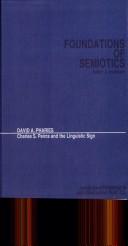
ISSN: 01682555 ISBN: 1283328658 9786613328656 9027279713 9789027279712 9027232792 9789027232793 Year: 1985 Volume: v. 9 Publisher: Amsterdam
Abstract | Keywords | Export | Availability | Bookmark
 Loading...
Loading...Choose an application
- Reference Manager
- EndNote
- RefWorks (Direct export to RefWorks)
This monograph is about the semiotics of lexical signs, and is of particular interest for historical linguists, in particular those interested in etymology. Specialists in linguistic change have long noticed that certain classes of words seem to be in part exempt from regular patterns of sound change, or perhaps more likely to undergo unusual analogical shifts. The problem is far worse for the etymologist, since the lexicon of every language contains some hundreds of semiotically problematic vocables which must, if the etymological dictionaries are ever to be completed, be explained somehow.
Semiotics --- History --- Peirce, Charles S. --- Contributions in semiotics. --- Semeiotics --- Semiology (Linguistics) --- Peirce, Charles Sanders, --- Peirce, C. S. --- Pirs, Charlz S., --- Peirce, Charles Santiago Sanders, --- Pʻo-erh-ssu, --- Pʻo-erh-ssu, Chʻa-li-ssu, --- Semantics --- Signs and symbols --- Structuralism (Literary analysis) --- Purs, Charls, --- Пърс, Чарлс, --- Chaersi Sangdesi Piersi, --- 查尔斯·桑德斯·皮尔斯, --- Séméiologie [Linguistique]. (Collection) --- Semiologie [Taalwetenschap]. (Reeks) --- Philosophy of language --- Peirce, Charles Sanders

ISBN: 0585001197 9780585001197 0253330475 9780253330475 Year: 1996 Publisher: Bloomington Indiana University Press
Abstract | Keywords | Export | Availability | Bookmark
 Loading...
Loading...Choose an application
- Reference Manager
- EndNote
- RefWorks (Direct export to RefWorks)
The nineteenth-century American philosopher and scientist Charles Sanders Peirce is considered to be one of the founders of semiotic, or the theory of signs. Although Peirce was a prolific writer, he never published his work on signs in an organized fashion, and as a result the scope of his thought is difficult to grasp. In this book, James Jakob Liszka presents a systematic and comprehensive account of Peirce's theory. Although there are excellent critical and expository studies of Peirce's semiotic, this book is the first to integrate all the various branches of semiotic into a coherent picture of what Peirce meant by the discipline. A general introduction for those unfamiliar with Peirce's theory, it is also an attempt to resolve some of the scholarly issues that surround the great American philosopher, and to help achieve some consensus on the more controversial matters of interpretation. Liszka begins with a general overview of the discipline of semeiotic (which is Peirce's preferred spelling). Semeiotic plays a critical role in the system of sciences as Peirce understood it. Since all investigation involves signs, semeiotic is pivotal since it not only provides a general understanding of signs, but also investigates their proper use in the process of inquiry, for both the natural sciences and cultural studies. The character of semeiotic in this regard turns out to be different from the semiology of Saussure, which was meant simply to be a branch of social psychology. Moreover, as a formal discipline, Peirce's semeiotic is broader than the contemporary sense of logic but incorporates most of its traditional concerns. Next, in a chapter on grammar, Liszka explores Peirce's notions of the essential characteristics of signs, their principal components, sign typology, and classification. This is followed by a discussion of critical logic, the proper use of signs in the investigation of the nature of things. Finally, Liszka explains universal rhetoric - the use of signs within discourse communities, the nature of communication, and the character of communities best suited to promote fruitful inquiry.
Semiotics. --- Semiotics --- Languages & Literatures --- Philology & Linguistics --- Semeiotics --- Semiology (Linguistics) --- Semantics --- Signs and symbols --- Structuralism (Literary analysis) --- Peirce, Charles S. --- Peirce, Charles Sanders, --- Peirce, C. S. --- Pirs, Charlz S., --- Peirce, Charles Santiago Sanders, --- Pʻo-erh-ssu, --- Pʻo-erh-ssu, Chʻa-li-ssu, --- Purs, Charls, --- Пърс, Чарлс, --- Chaersi Sangdesi Piersi, --- 查尔斯·桑德斯·皮尔斯, --- Contributions in semiotics.
| Listing 1 - 10 of 15 | << page >> |
Sort by
|

 Search
Search Feedback
Feedback About UniCat
About UniCat  Help
Help News
News